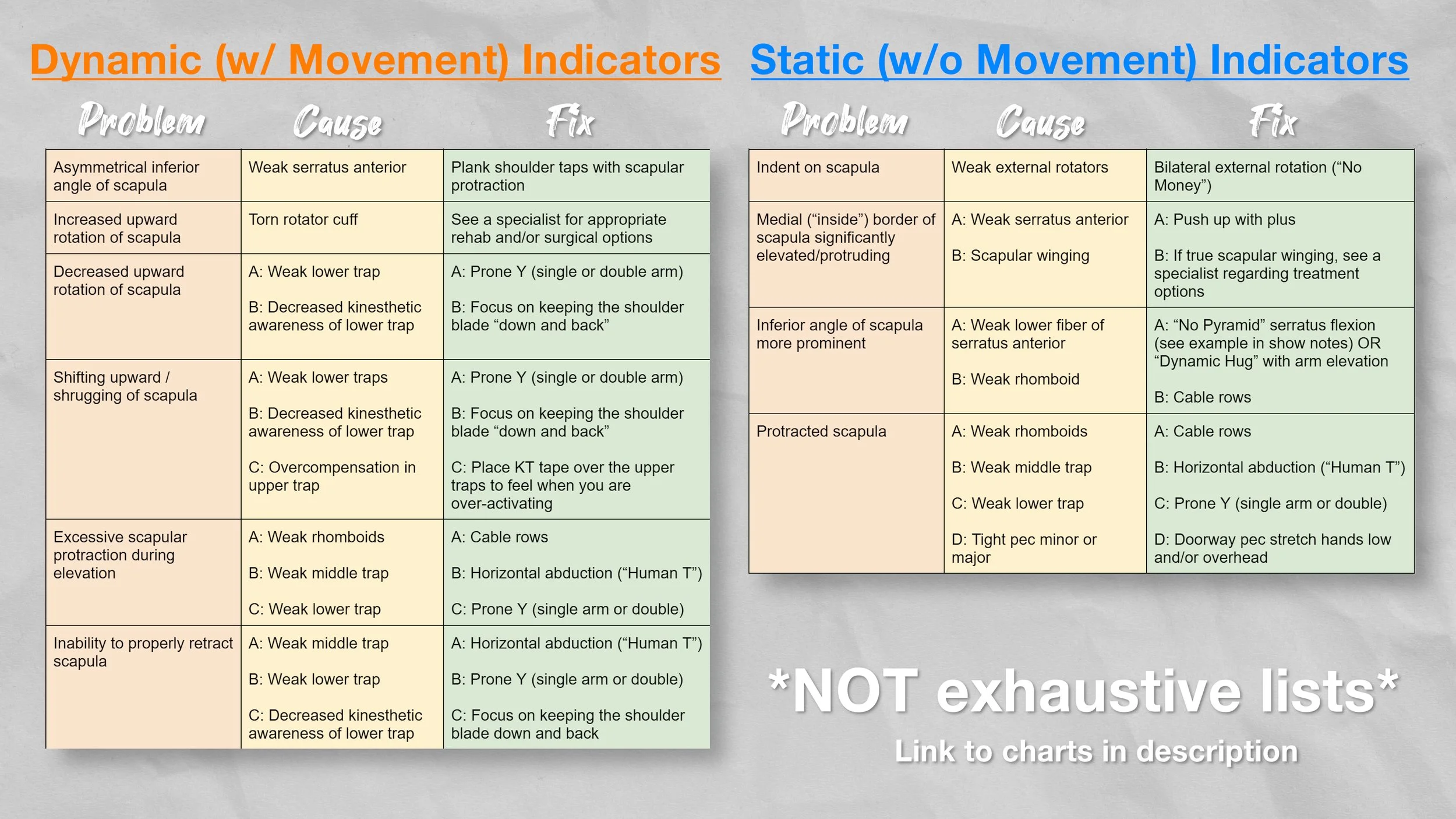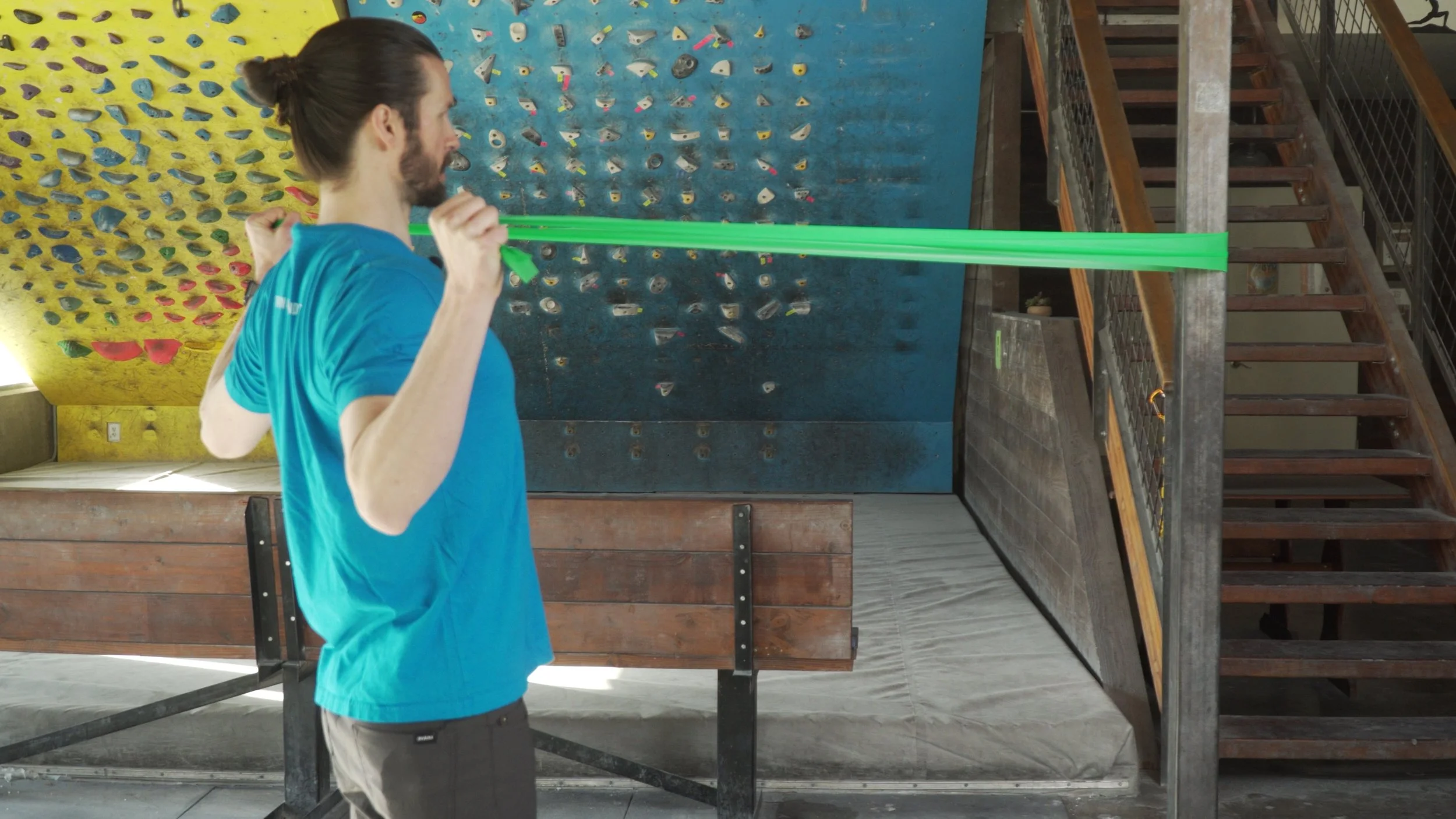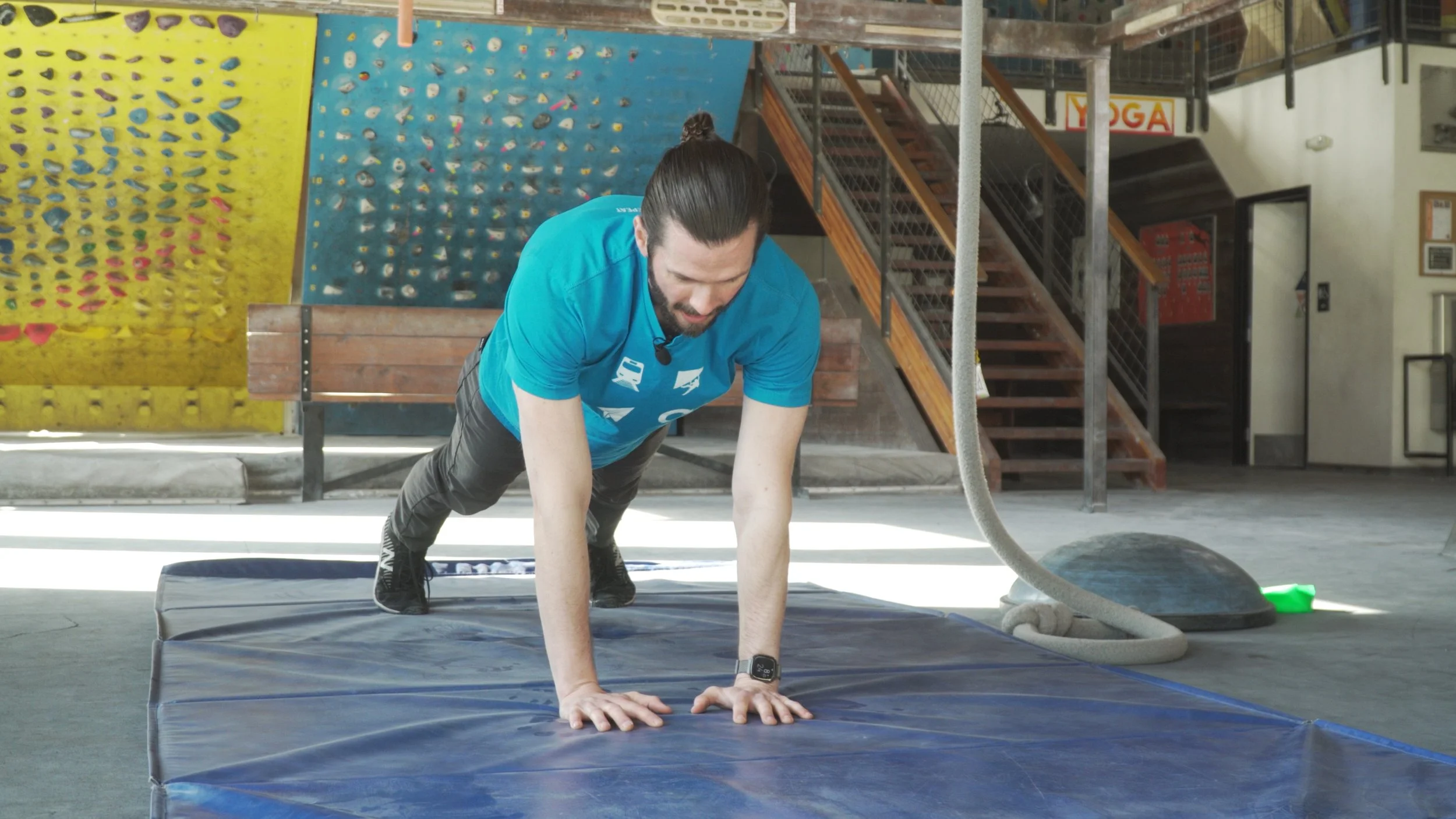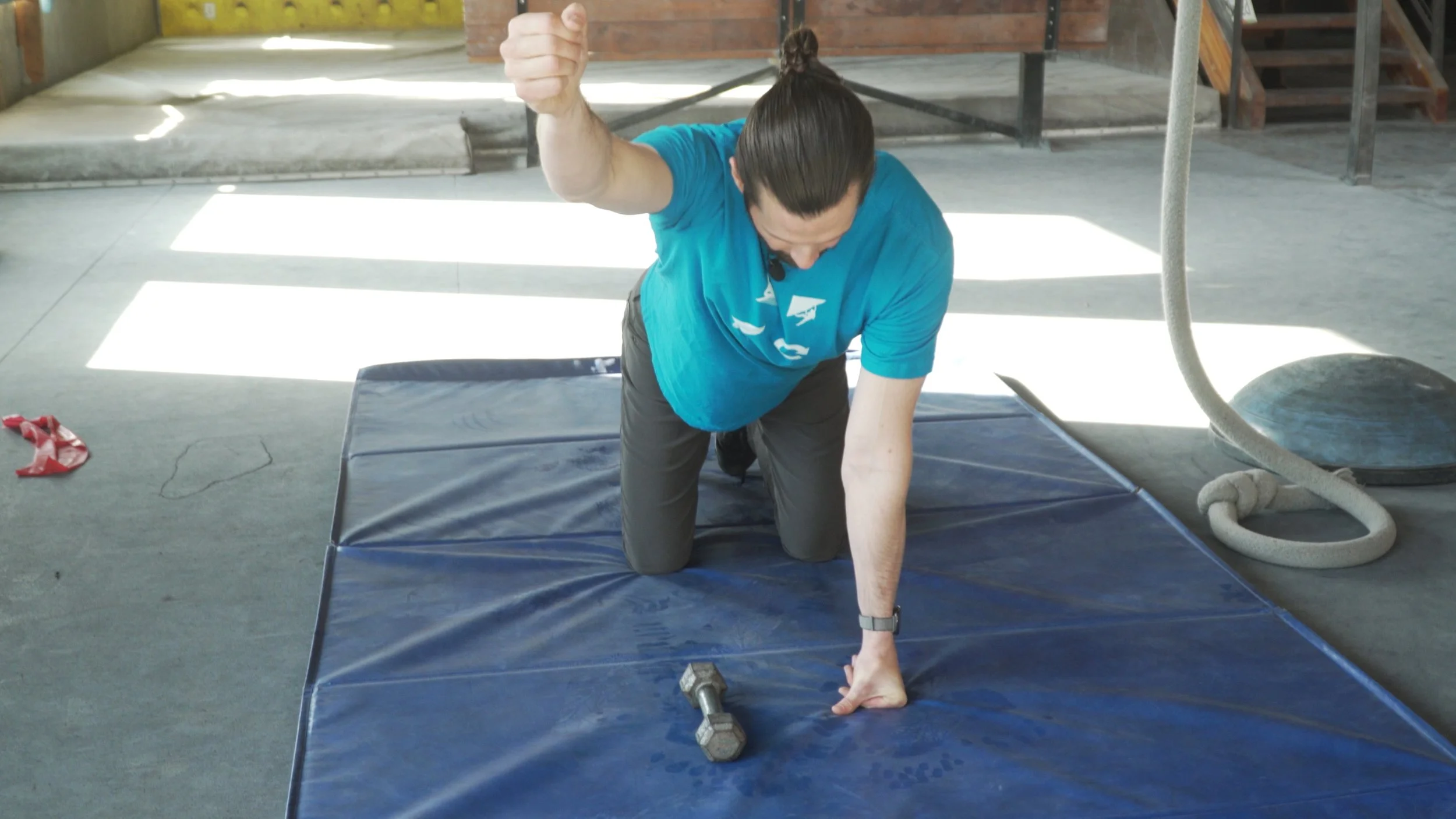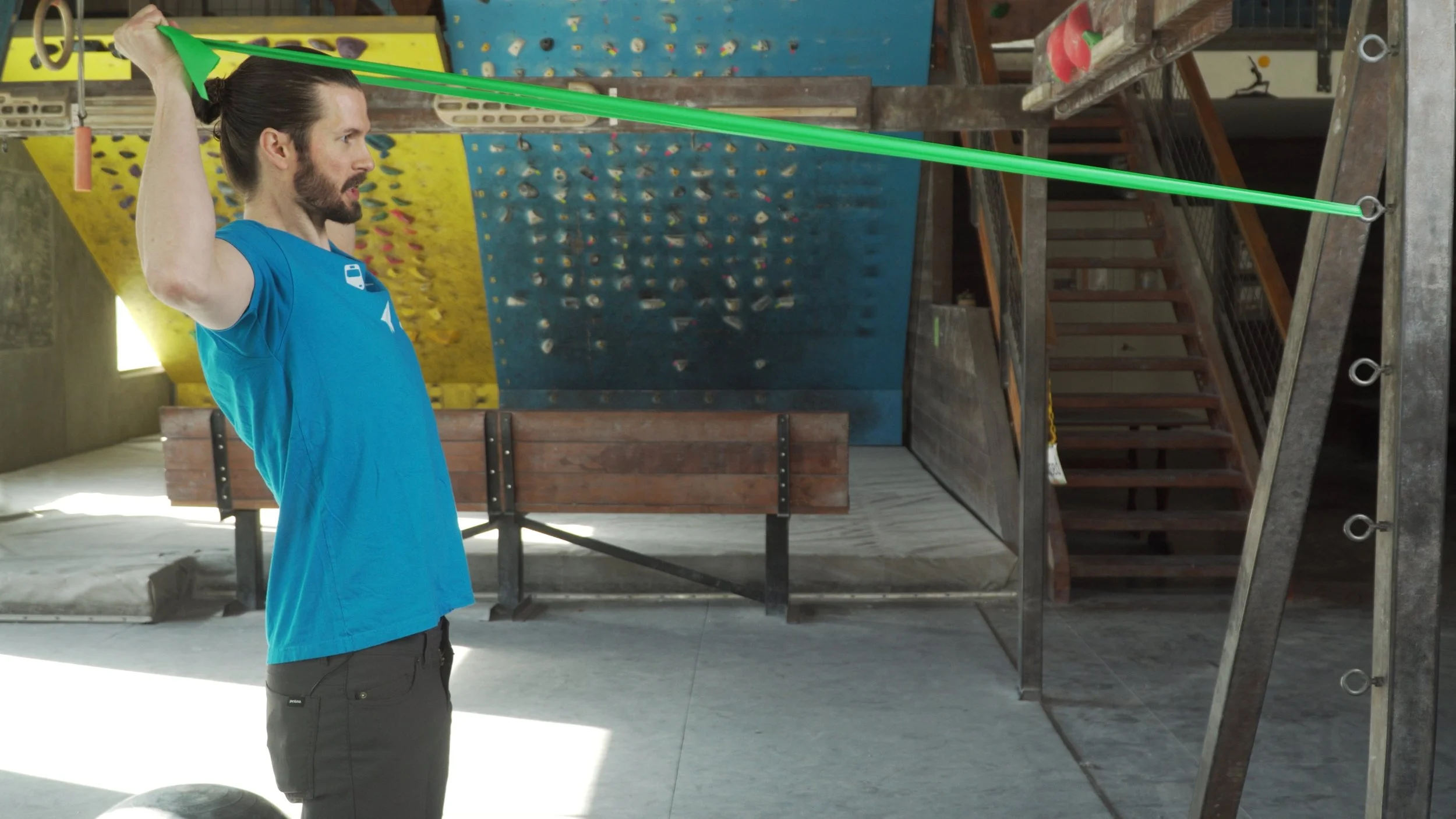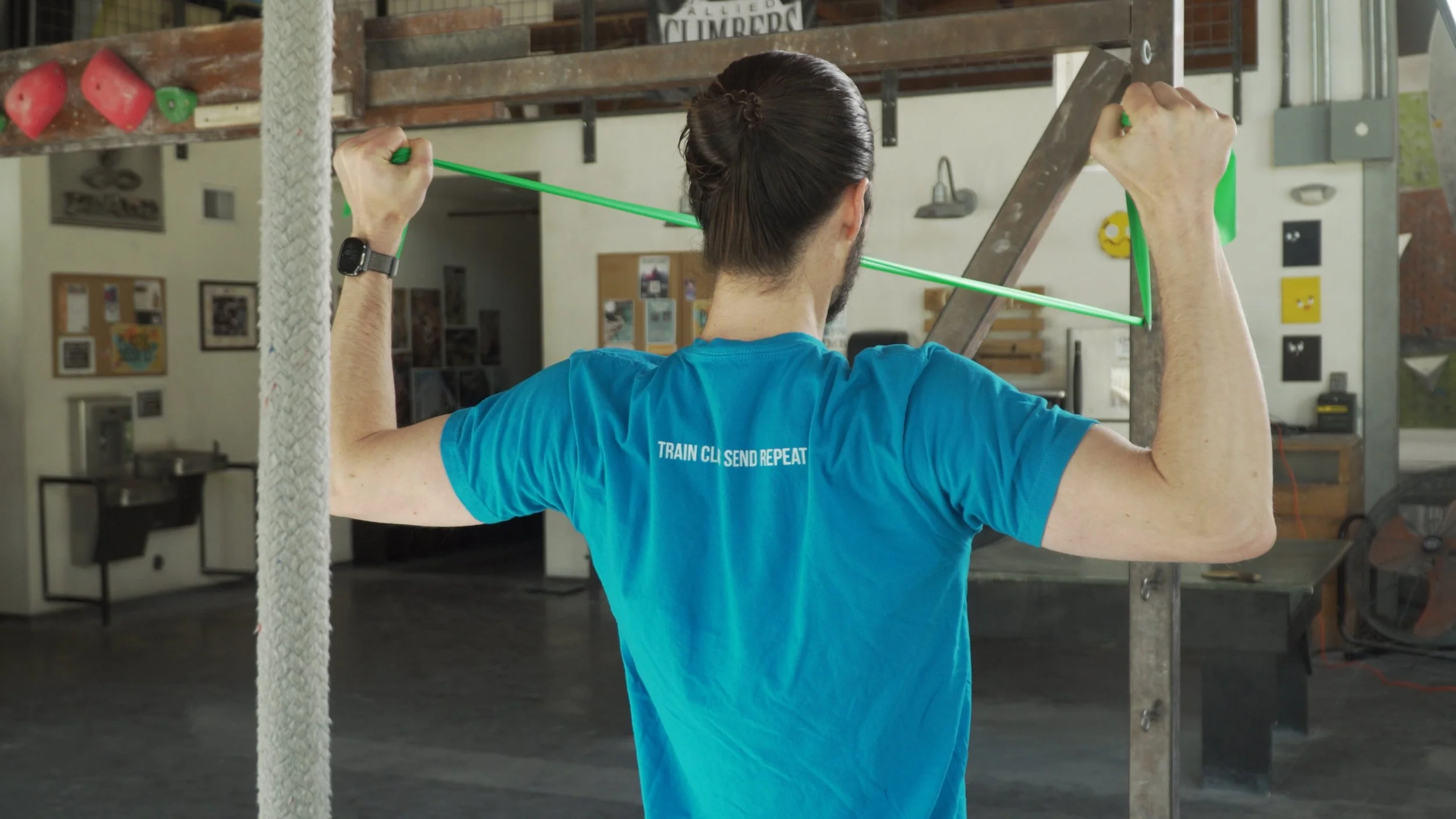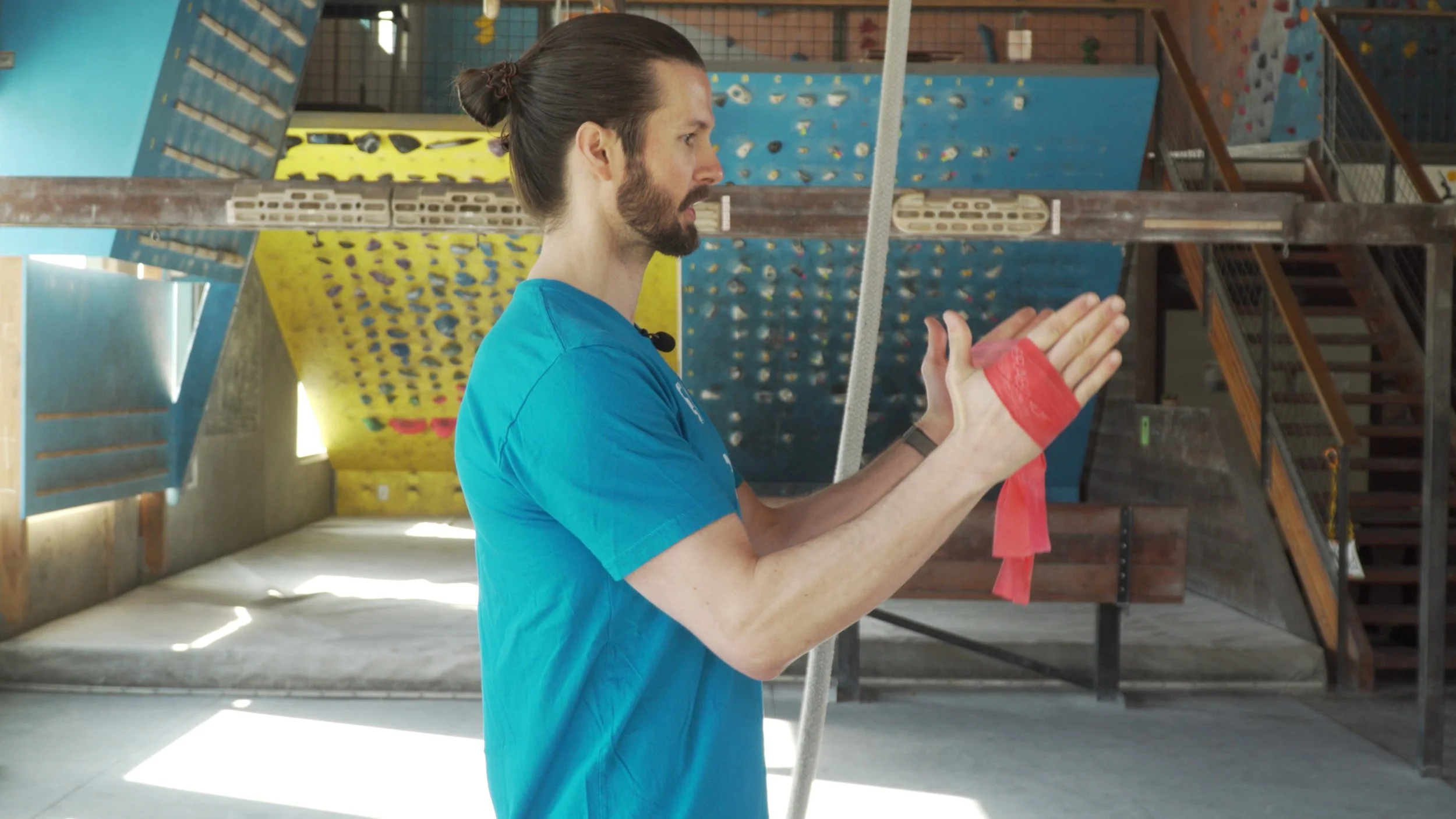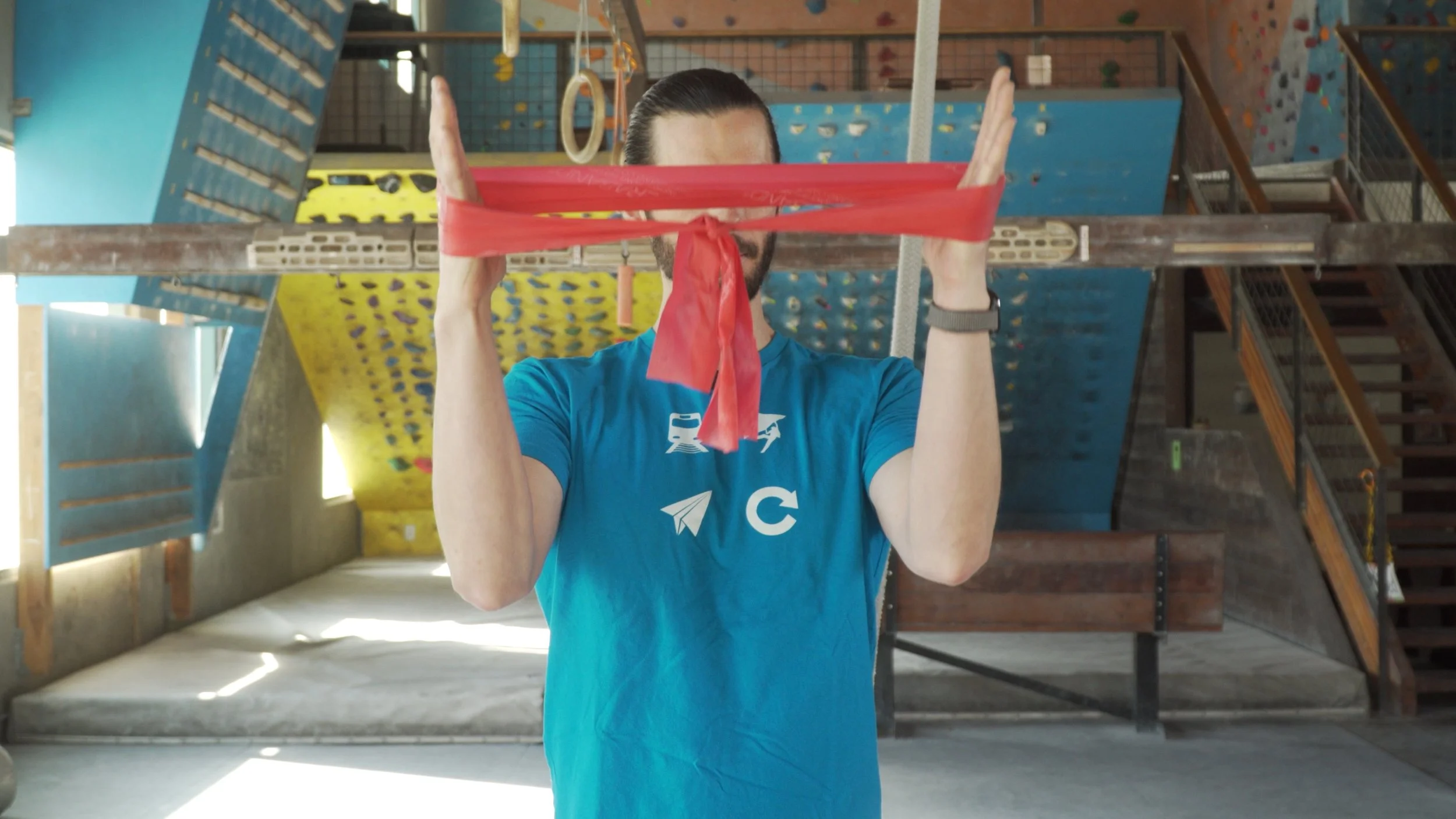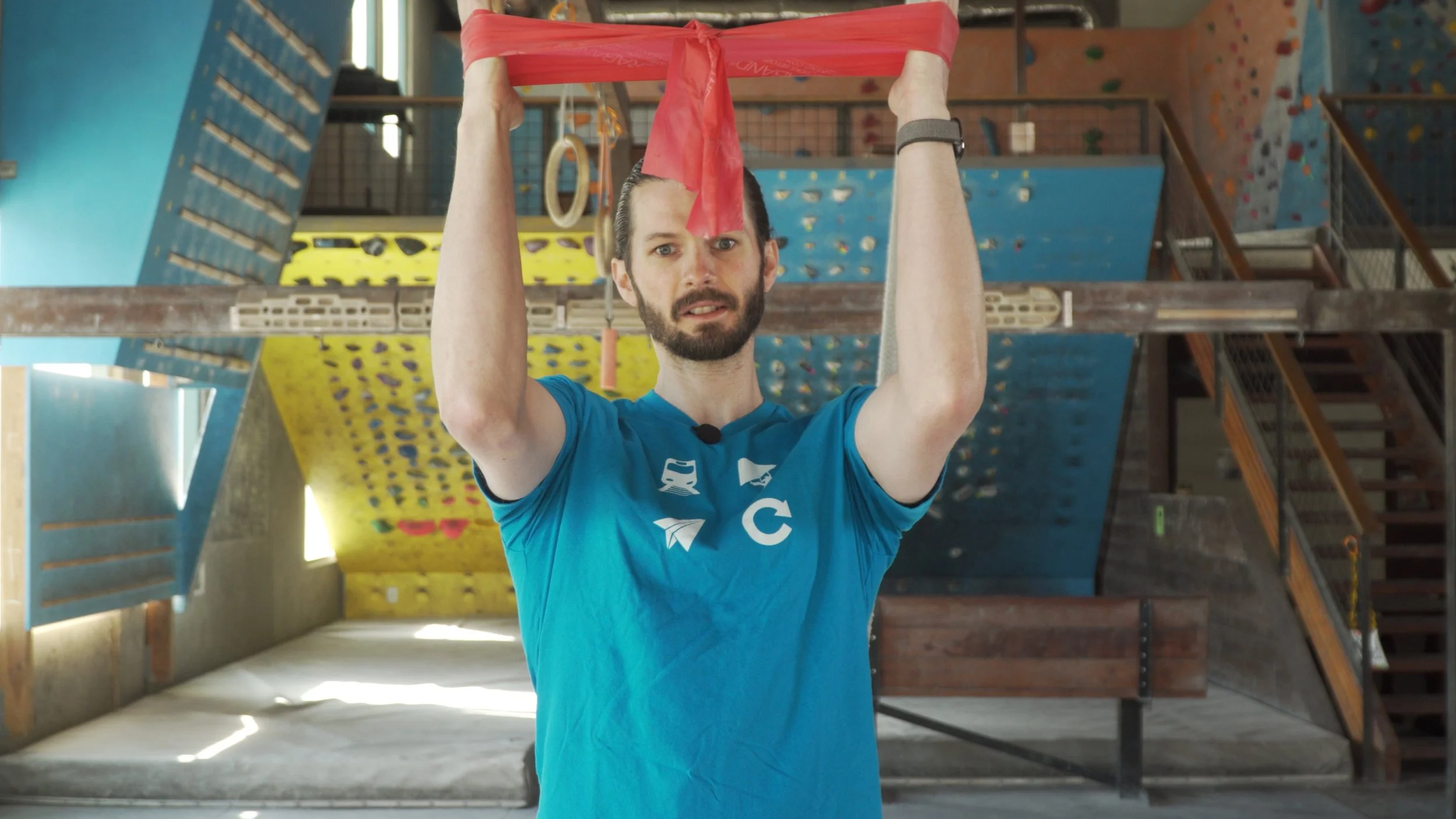How to Fix Scapular Dyskinesis for Climbers (Shoulder Blade "Winging")
Hooper’s Beta Ep. 103
INTRODUCTION
Fixing scapular dyskinesis can seem like a daunting task for your average climber without expert assistance, and while I definitely still recommend you see a professional if you have real concerns, this workout should provide you with a low risk blanket approach getting your scapula and shoulders back on track.
You can of course design your own workout using these charts I’ve created, but not everyone wants to tackle that.
THE WORKOUT
We’re going to do two circuits with three exercises in each.
Circuit 1: 2-3x through
Standing W with scap retraction
Plank Shoulder Taps with Scapular Protraction
Quadruped Shoulder Flexion vs PNF D2 flexion
Circuit 2: 2-3x through
Face pull with overhead press
Push Up PLUS on BOSU
“No Pyramid” serratus flexion (alternate upper cuts or bear hugs)
Exercise #1
Exercise Name: Standing W with resistance
Nickname: W’s
Targeted Muscles: Teres minor and Infraspinatus, rhomboids and middle trap
Purpose: The purpose is to start working on good scapular retraction and our external rotators while elevating the position of our arms to make this more functional for climbing.
How to: anchor a double stranded resistance band in front of you at a height between your belly button and chest. Grab the bands with both hands. There should be some tension in the band with both arms/elbows straight. Pull the band back to you while bending the elbows and rotating your arms back. You should be punching your fists backwards while forming a ‘W’ shape with your arms and squeezing your shoulder blades together. Make sure to avoid shrugging.
Reps: 8-12
Exercise #2
Exercise Name: Plank Shoulder Taps
Nickname: none
Targeted Muscles: Serratus Anterior, long head of triceps, shoulder stabilizers
Purpose: The purpose of this is to strengthen the serratus anterior while stabilizing the shoulder and obtaining co-activation of the core muscles.
How to: Start in a push up position with feet wider than hips and hands more narrow than shoulders. Perform scapular protraction and tighten the core. You will maintain this position throughout the movements. Shift the weight to 1 arm while lifting the other and touching your opposite shoulder. Alternate arms.
Reps: 20 (10 each)
Exercise #3
Exercise Name: Quadruped Shoulder Flexion
Nickname: none
Targeted Muscles: Serratus anterior and lower trapezius
Purpose: The purpose is to get great serratus anterior and lower trapezius activation in a closed chain activity (on one hand) and open chain on the other. This provokes dynamic stability of the shoulder and scapula unit. This exercise is also backed by EMG research showing high activation of the serratus anterior and lower trap. It is performed later on, though, to make sure you have good activation of the lower trap and are not compensating in the upper trap.
How to: Start on your hands and knees. I prefer being on the knuckles for this to work on wrist stability as a bonus. Perform scapular protraction. Lift one arm up overhead into a flexed position. Lower the hand down and repeat. Repeat all reps on 1 side before switching.
Reps: 8-10
Exercise #4
Exercise Name: Face pulls with overhead press
Nickname: none
Targeted Muscles: Infraspinatus and teres minor, middle and lower trapezius
Purpose: The mega exercise that can do it all! Initially it targets the teres minor and the middle trapezius while in an awesome position to be functional for climbing, then it works on the lower trap and dynamic shoulder stabilizers as you raise the resistance overhead.
How to: anchor a double stranded resistance band in front of you at a height between your belly button and chest. Grab the bands with both hands. There should be some tension in the band with both arms/elbows straight. Pull your arms back towards you while bending your elbows to about 90 degrees. Your shoulders should be at 90 degrees of side elevation at the end of the movement. Your thumbs should be face in towards each other. Pause briefly, then, begin to press overhead. Lower back down, and then return to the starting position with your arms out in front of you.
Reps: 8-10
Exercise #5
Exercise Name: Push-up Plus On BOSU
Nickname: none
Targeted Muscles: Serratus anterior, triceps, pec major/minor
Purpose: create stability of the shoulder while getting high levels of serratus anterior activation.
How to: Grab a BOSU (or other unstable object). Get into a push up position with feet narrow. Slowly lower yourself down and then push back up. At the end of the movement be sure to perform the “plus” which is scapular protraction. You may be able to do this as 1 fluid move, or you may need to keep the push up and the ‘plus’ separate to make sure you have good form.
Reps: 10-15
Exercise #6
Exercise Name: Serratus Flexion with band resistance
Nickname: No Pyramid
Targeted Muscles: Infraspinatus, Serratus Anterior (with emphasis on lower fibers)
Purpose: The power here is to work the external rotators as well as the lower fibers of the serratus anterior.
How to: You’ll need a circular band for this, or simply tie a band into small circle. Place the band around both wrists (or for an added bonus, place around the hands). Start with your arms at your side and elbows bent to 90 degrees. Externally rotate slightly until your forearms are parallel to each other. While maintaining resistance in the band and keeping the elbows bent at 90 degrees, lift your arms straight up until they are at 90 degrees as well. This where the “no pyramid” nickname comes into play. Don’t allow your elbows to flare out, and don’t let the hands drop in. The arms need to stay parallel to feel the work. Slowly lower the arms back down. Repeat
Reps: 6-8
WHEN TO DO IT
You can perform this once a week to maintain or slowly build healthy shoulders, or twice a week to really up your scapula game if this is a larger issue for you. Do this independent of a climbing day as it’s own workout, or do it after a somewhat light climbing session.
FINAL ADVICE
Keep in mind there are many ways to train the muscles we’re targeting here, but I chose this format to keep things relatively short and simple so as to not discourage anyone. There may be some overlap between exercises in this routine but in this case I’m okay with that. Just remember, there are no perfect workout routines, and a good routine for one person may not be good for someone else.
And, hey, if you like this video consider giving it a thumbs up! And subscribe if you’re feeling extra psyched.
Until next time: Train your friends to compliment your scapulohumeral rhythm while you climb the social hierarchy and ultimately ascend to the top of your scapular kingdom. Aaaand repeat, but this time, make a Netflix series about it.
Disclaimer:
As always, exercises are to be performed assuming your own risk and should not be done if you feel you are at risk for injury. See a medical professional if you have concerns before starting new exercises.
Written and Presented by Jason Hooper, PT, DPT, OCS, SCS, CAFS
IG: @hoopersbetaofficial
Filming and Editing by Emile Modesitt
www.emilemodesitt.com
IG: @emile166
